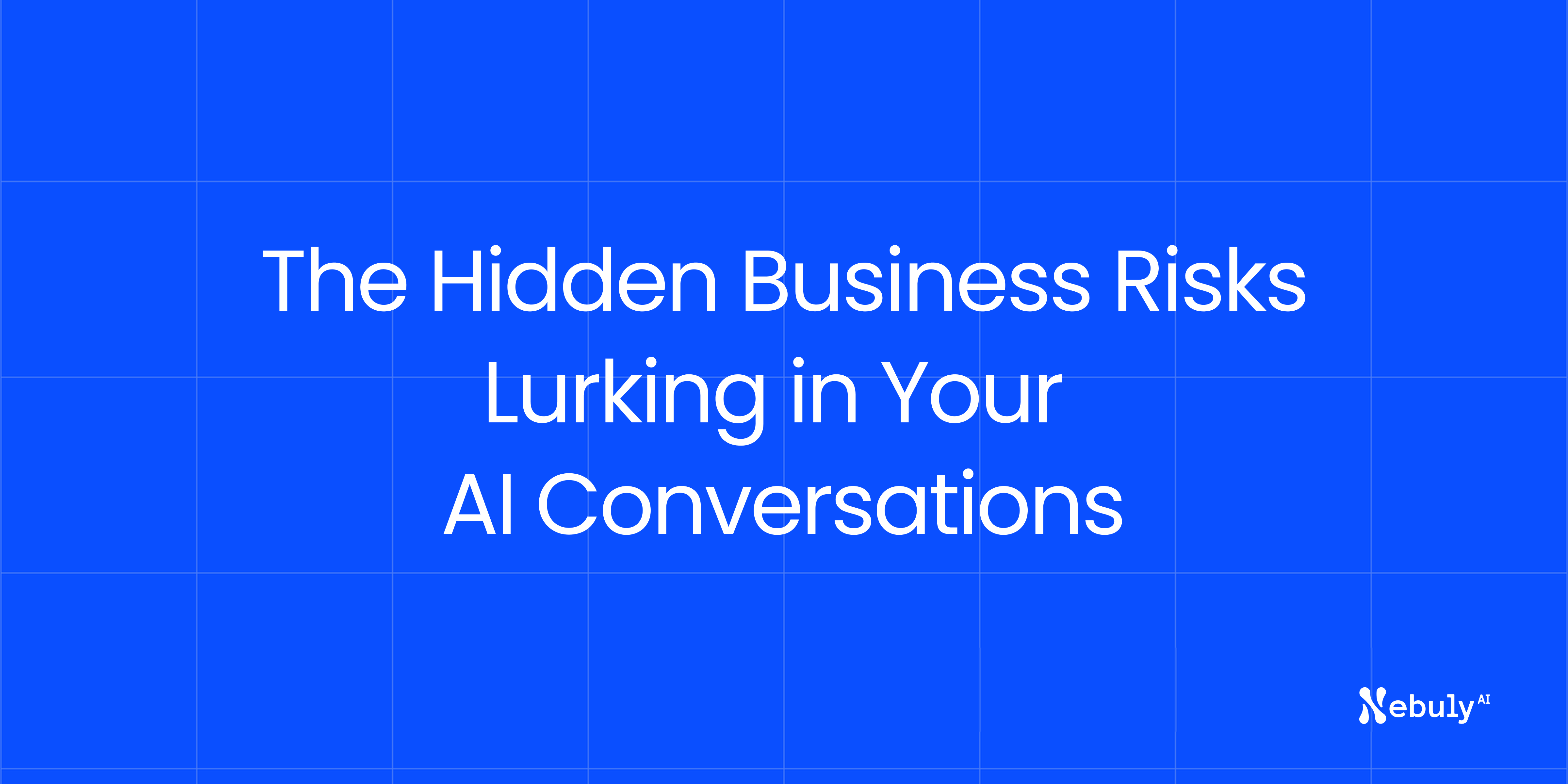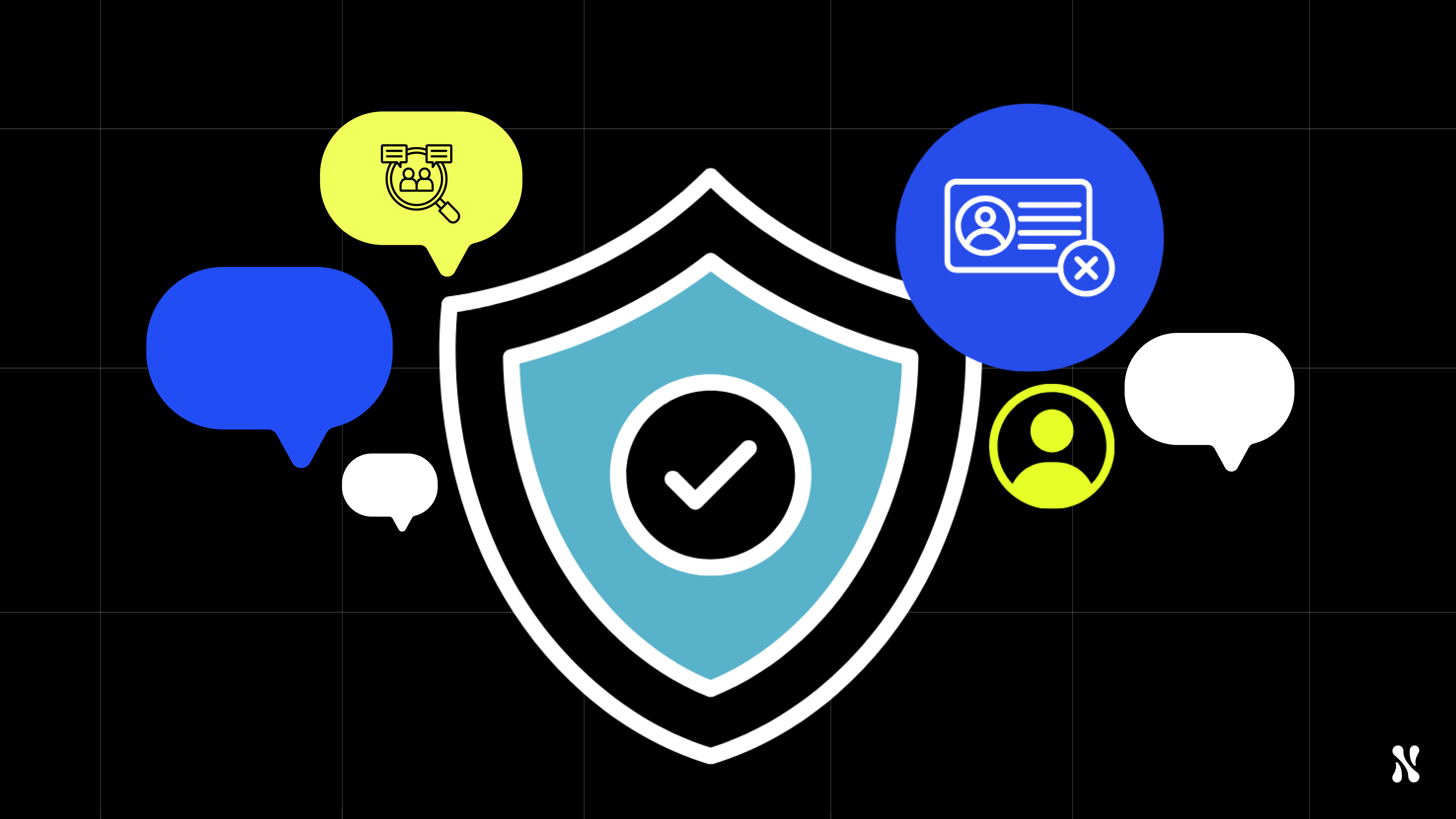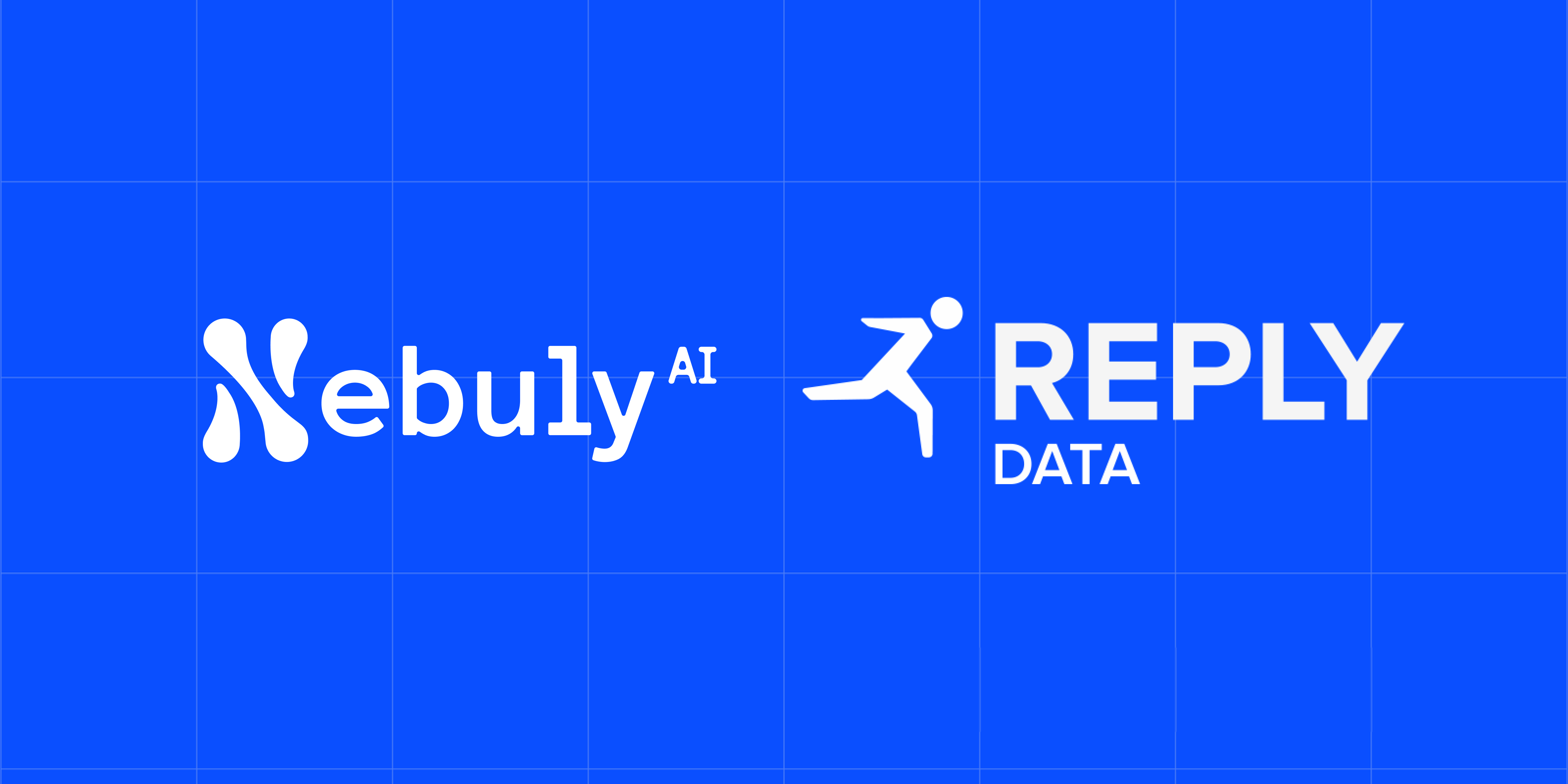Your AI assistant just helped an employee draft an email containing confidential client information that shouldn't be shared outside the organization. Your customer service AI recommended a product that violates industry regulations. Your internal copilot provided financial advice that could expose your company to liability.
These scenarios happen every day, and most organizations have no idea.
Traditional AI monitoring focuses on technical performance like uptime, latency, and accuracy. But the real business risks emerge from the content and context of conversations. These risks remain invisible until they become expensive problems.
Conversational risk analytics is the new Frontier of AI governance. Here's what's at stake and how forward-thinking organizations are getting ahead of the curve.
The Invisible Risk Layer
Beyond Technical Monitoring
Most AI systems today are monitored like traditional software:
- System health: CPU usage, memory consumption, response times
- API performance: Request rates, error codes, throughput
- Model metrics: Accuracy scores, confidence levels, token usage
But AI systems create entirely new categories of risk that these metrics can't detect:
Content Risks: What the AI actually says
Context Risks: Whether responses are appropriate for the specific situation
Compliance Risks: Whether interactions meet regulatory requirements
Reputation Risks: Whether conversations could damage brand trust
Legal Risks: Whether AI advice creates liability exposure
The Risk Discovery Gap
Traditional monitoring is reactive. It reports what already happened. Business risk detection must be proactive, identifying problems as conversations unfold.
Consider these real-world scenarios:
Scenario 1: The Compliance Violation
- Employee asks AI about handling customer data
- AI provides technically accurate information
- But the advice doesn't align with company's specific GDPR policies
- Result: Potential compliance violation hidden in "successful" conversation
Scenario 2: The Reputation Risk
- Customer asks AI about product limitations
- AI acknowledges flaws but in way that undermines brand confidence
- Technically truthful, but commercially damaging
- Result: Brand erosion disguised as helpful customer service
Scenario 3: The Security Exposure
- Employee shares internal project details while asking for help
- AI response doesn't directly expose secrets
- But conversation pattern suggests presence of confidential information
- Result: Data security risk invisible to traditional monitoring
Understanding risk management in GenAI projects requires looking beyond technical metrics.
The Business Risk Categories
1. Compliance and Regulatory Risks
Financial Services: AI provides investment advice without proper disclaimers
Healthcare: AI suggests medical information that could be construed as diagnosis
Legal: AI offers guidance that could be interpreted as legal advice
Education: AI shares information that violates student privacy regulations
These risks often emerge from the intersection of accurate information and regulatory context that AI systems struggle to navigate.
2. Data Privacy and Security Risks
Information Leakage: AI inadvertently reveals patterns from training data
Cross-tenant Contamination: AI mixes information between different customers
Confidentiality Breaches: AI doesn't recognize when information should remain private
Access Control Violations: AI provides information to unauthorized users
Traditional security monitoring catches external attacks, but conversational AI creates new internal risk vectors.
3. Bias and Discrimination Risks
Hiring AI: Demonstrates bias against protected classes in candidate screening
Customer Service AI: Provides different service quality based on demographic indicators
Financial AI: Shows lending or pricing bias that violates fair lending laws
HR AI: Gives advice that could create hostile work environment
These risks are often subtle and emerge through conversation patterns rather than single interactions.
4. Brand and Reputation Risks
Tone Misalignment: AI responses that don't match company values or voice
Competitive Intelligence: AI accidentally reveals strategic information
Customer Frustration: AI creates negative experiences that damage relationships
Public Relations: AI statements that could be embarrassing if made public
Brand risks compound over time as negative experiences accumulate across user base.
5. Legal Liability Risks
Advice Liability: AI provides guidance that users rely on to their detriment
Contract Formation: AI statements that could be construed as binding commitments
Warranty Issues: AI makes product claims that exceed actual capabilities
Negligence Claims: AI fails to warn users about known risks or limitations
Legal risks often involve the intersection of AI capabilities and human expectations.
Real-Time Risk Detection Technology
Proactive Conversation Monitoring
Effective business risk detection requires analyzing conversations as they happen:
Content Analysis:
- Scan conversations for regulatory keywords and phrases
- Identify potential compliance violations in real-time
- Flag sensitive topics that require human review
Context Assessment:
- Evaluate whether AI responses are appropriate for specific user roles
- Check conversations against company policies and procedures
- Assess risk level based on conversation content and participant
Pattern Recognition:
- Identify unusual conversation patterns that might indicate problems
- Detect when conversations venture into high-risk territories
- Recognize when AI responses don't align with company guidelines
Multi-Layer Risk Classification
Immediate Risks: Require instant intervention or conversation termination
Elevated Risks: Need human review before conversation continues
Monitoring Risks: Should be flagged for later analysis and pattern tracking
Learning Risks: Indicate need for additional AI training or policy updates
Automated Response Protocols
Risk Escalation: Automatically route high-risk conversations to human oversight
Conversation Limiting: Restrict AI responses when risk thresholds are exceeded
User Notification: Alert users when conversations enter sensitive areas
Documentation: Create audit trails for compliance and legal review
Discover how user analytics provides the missing layer for comprehensive risk management.
Building Risk-Aware AI Governance
The Risk Assessment Framework
1. Risk Identification
- Catalog potential risks specific to your industry and use cases
- Map regulatory requirements to conversation content
- Identify company policies that AI must respect
- Define risk tolerance levels for different scenarios
2. Detection Capabilities
- Implement real-time conversation monitoring
- Deploy risk classification algorithms
- Create escalation workflows for different risk levels
- Establish human oversight protocols
3. Response Procedures
- Define automatic actions for different risk categories
- Create intervention strategies that don't disrupt user experience
- Establish documentation requirements for audit purposes
- Build feedback loops for continuous risk model improvement
4. Governance Integration
- Align risk detection with existing compliance programs
- Train legal and compliance teams on AI-specific risks
- Create reporting dashboards for risk management oversight
- Establish regular risk assessment and policy review cycles
The Cross-Functional Approach
Effective AI risk management requires collaboration across multiple teams:
Legal and Compliance: Define risk parameters and regulatory requirements
IT and Security: Implement technical controls and monitoring systems
Business Teams: Provide context on operational risks and impact
AI/ML Teams: Integrate risk detection into AI system architecture
The Competitive Advantage of Risk-Aware AI
Proactive vs Reactive Organizations
Reactive Approach (Most Organizations Today):
- Wait for problems to occur
- Respond to incidents after they happen
- Learn from expensive mistakes
- Play defense against AI risks
Proactive Approach (Forward-Thinking Organizations):
- Anticipate risks before they materialize
- Prevent problems through real-time monitoring
- Build trust through transparent risk management
- Turn risk management into competitive advantage
The Trust Dividend
Organizations with robust AI risk detection capabilities gain:
Regulatory Confidence: Demonstrate proactive compliance management
Customer Trust: Show commitment to responsible AI deployment
Employee Confidence: Provide safe environment for AI tool usage
Competitive Advantage: Deploy AI more aggressively with better risk controls
The Future of AI Risk Management
Evolution Toward Intelligence
Next-generation risk detection systems will move beyond rule-based monitoring to intelligent risk assessment:
Adaptive Risk Models: Learning systems that improve risk detection over time
Predictive Risk Assessment: Identifying potential problems before they occur
Contextual Risk Evaluation: Understanding risk within specific business contexts
Integrated Risk Management: Connecting AI risks with broader enterprise risk frameworks
The Risk-Aware AI Era
The organizations that thrive in the AI era won't be those with the most powerful models. They'll be those with the most comprehensive risk management.
As AI becomes more powerful and pervasive, business risk detection becomes a core competency. The companies that master this discipline will deploy AI more confidently, scale more quickly, and compete more effectively. Nebuly helps enterprises monitor and mitigate conversational risks in real time, from PII exposure to non-compliant AI behavior, while keeping user experience and privacy intact.
The future belongs to organizations that can harness AI's power while managing its risks intelligently.
Ready to build comprehensive AI risk detection capabilities? Discover how leading organizations proactively monitor business risks in AI conversations while maintaining user experience and operational efficiency. Book a demo today






